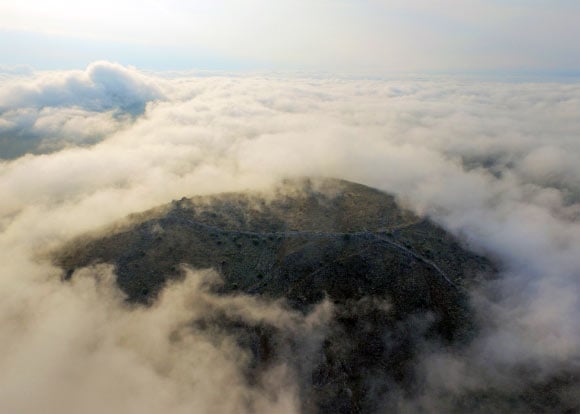
A team of archeologists working in Greece has made a sensational discovery that can lead to a new understanding of the ancient world.
An international group of researchers from the University of Gothenburg, Sweden announced last week that they had found the ruins of a 2,500-year-old metropolis buried atop the Strongilovoúni hill on the great Thessalian plains.
The unknown city, located near the village of Vlochos in central Greece, is believed to have been a metropolis according to the extent of the ruins found there, rather than an obscure settlement on a mountain.
“Most striking of the visible remains at the site are the well-preserved fortifications, at points still 8 feet high, but the lower slopes below the hill show clear indications of being the location of an extensive urban settlement, now covered by silt and sediment from the nearby river Enipeas,” says Robin Rönnlund, PhD student in Classical Archaeology and Ancient History at the University of Gothenburg and leader of the fieldwork.
“A colleague and I came across the site in connection with another project last year, and we realised the great potential right away. The fact that nobody has never explored the hill before is a mystery,” he added.
The researchers believe that the presence of a major city in an area previously considered a backwater of the ancient world can deliver new findings on a tumultuous period in Greek history.
The sensational discovery comes just weeks after Egyptian archeologies discovered a 7,000-year-old lost city along the Nile, also thought to have been an important metropolis.
While almost none of this is visible from the ground below, the 99-acre area contains a tower, a main square, walls and gates, and a street grid indicative of the city’s significance and size.
Thanks to pottery and coins found at the site, the researchers can estimate the city’s date. “Our oldest finds are from around 500 BC, but the city seems to have flourished mainly from the fourth to the third century BC before it was abandoned for some reason, maybe in connection with the Roman conquest of the area,” says Rönnlund.
Fragment of red-figure pottery from the late 6th century BC, probably by Attic painter Paseas. Courtesy Gothenburg University
In order to avoid disturbing the site, the archeologists are using a ground-penetrating radar rather than excavating. The method has proven highly effective, as the structures discovered so far have all been recognized by the radar rather than dug up.